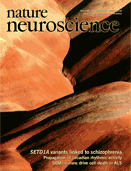- EN - English
- CN - 中文
Thinned-skulled Cranial Window Preparation (Mice)
薄颅骨窗口的制备(小鼠)
发布: 2017年03月05日第7卷第5期 DOI: 10.21769/BioProtoc.2158 浏览次数: 7488
评审: Soyun KimMarina AllerbornXi Feng
Abstract
Imaging structural plasticity or activity of neurons in the brain circuit will facilitate understanding the neural mechanisms underlying animal behavior. Here we describe a modified procedure, the polished and reinforced thinned-skull cranial window preparation, by which we can image dendrites and spines in mouse layer I cortex for weeks (Zhang et al., 2016). By this method, we also imaged the glioma initiation in the mouse cortex for two weeks in previous work (Zhang et al., 2012), which included the photographs and video for reference.
Keywords: Neuroscience (神经科学)Background
Three cranial window procedures are currently available for in vivo imaging, open-skull cranial window (Trachtenberg et al., 2002), thinned-skull cranial window (Yang et al., 2010) and polished and reinforced thinned-skull cranial window (Drew et al., 2010). Each protocol has both advantages and disadvantages. Open-skull has best optical imaging quality, unlimited repetitive imaging times and large field of view, but needs to wait for 2 weeks to recover from surgery and also has the inflammation and glia activation issue; Thinned-skull protocol has minimal disturbance from inflammation and glia activation on the brain, but has limited repetitive imaging times, only 2-5 times for a cranial window, small field of view(< 300 μm in diameter); Polished and reinforced thinned-skull method allows unlimited repetitive imaging, large field view(< 3 mm in diameter) and minimal disturbance, but the optical imaging quality decreases over time because of light diffusion and absorption at the interface with regenerated bone. Researcher may choose an appropriate protocol according to specific study.
Materials and Reagents
- Small paper towel
- Miniature blade (Surgistar, catalog number: 6900 )
- Cotton swabs
- #0 cover glass (3 mm diameter) (Warner Instruments)
- Custom-made silicone whip (see Drew et al., 2010 supplemental)
- Sodium chloride injection (USP)
- Cyanoacrylate glue (Loctite)
- Mouse, Thy1-YFPH, 6~12 weeks, male
Note: Younger mouse has faster bone regeneration, which may lead to shorter time window for high quality images. - Ketamine (diluted to 10 mg/ml)
- Xylazine (diluted to 1.5 mg/ml)
- Carprofen (diluted to 0.05 mg/ml)
- Artificial tears ointment (Rugby Laboratories)
- Saline
- 7.5% Betadine
- 70% alcohol
- 2% lidocaine
- Diamond paste (3.5 micron diamond pastes) (Wicked Edge, catalog number: WE0535SP )
- Tin oxide (Lortone, catalog number: 591-038 )
- Liner Bond 2V (KURARAY, catalog number: 1921-KA )
- Isofluorane (0.2%, 0.4 L/min)
Equipment
- Heating blanket
- Sterile glass beaker
- Scissors
- Thumb forceps
- Small sterile drape or platform
- Custom-made headpiece holder
- High-speed micro drill (CellPoint Scientific, model: Ideal Micro Drill Kit )
- 0.5 mm-diameter diamond drill bit (Widget Supply, catalog number: D-CM13 )
- Hex nut (Small Parts, catalog number: HNX-0090-C )
- Dissecting microscope
Software
- ImageJ
Procedure
文章信息
版权信息
© 2017 The Authors; exclusive licensee Bio-protocol LLC.
如何引用
Zhang, L., Liang, B., Li, Y. and Lin, D. (2017). Thinned-skulled Cranial Window Preparation (Mice). Bio-protocol 7(5): e2158. DOI: 10.21769/BioProtoc.2158.
分类
神经科学 > 行为神经科学 > 实验动物模型
您对这篇实验方法有问题吗?
在此处发布您的问题,我们将邀请本文作者来回答。同时,我们会将您的问题发布到Bio-protocol Exchange,以便寻求社区成员的帮助。
提问指南
+ 问题描述
写下详细的问题描述,包括所有有助于他人回答您问题的信息(例如实验过程、条件和相关图像等)。
Share
Bluesky
X
Copy link












